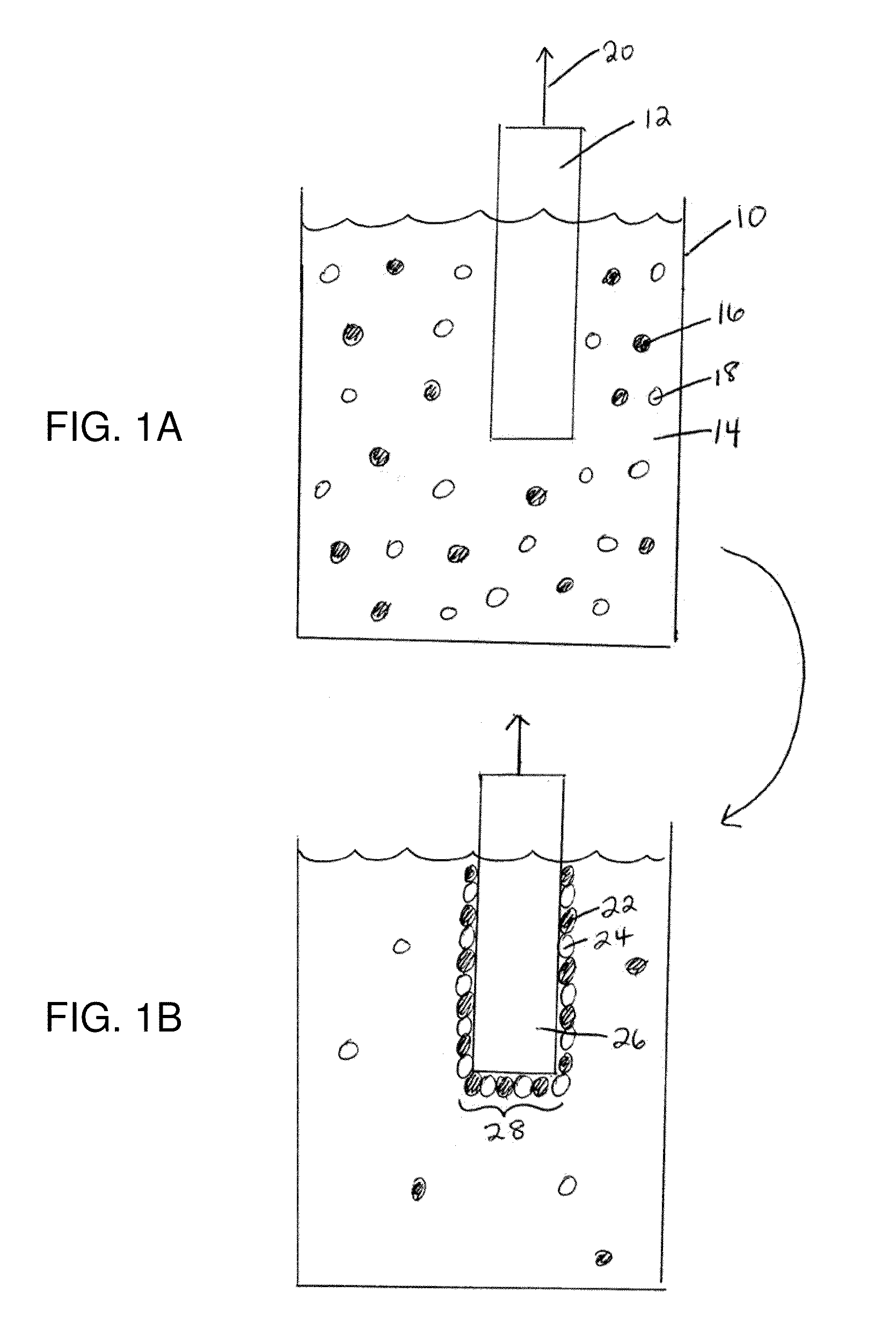Catalytic materials, electrodes, and systems for water electrolysis and other electrochemical techniques
a technology of electrochemical techniques and catalysts, applied in the field of catalyst materials, can solve the problems of limiting the conversion efficiency, reducing the efficiency of anodic water oxidation, and requiring a large amount of effort, so as to reduce the cost of production, increase the rate of chemical electrolysis, and reduce the use of electrodes
- Summary
- Abstract
- Description
- Claims
- Application Information
AI Technical Summary
Benefits of technology
Problems solved by technology
Method used
Image
Examples
example 1
[0240]The following gives an example of the formation of an electrode according to a non-limiting embodiment. Cyclic voltammetry of a 0.5 mM solution of Co(NO3)2 in 0.1 M potassium phosphate pH 7.0 (herein referred to as neutral KPi electrolyte) exhibited an oxidation wave at 0.915 V followed by the onset of a strong catalytic wave at 1.0 V. As reported in this example, and those following, all voltages are reported relative to a normal hydrogen electrode, NHE, unless otherwise stated. A broad, relatively weak reduction wave was observed on the cathodic scan. FIG. 9A shows the cyclic voltammogram in neutral 0.1 M KPi electrolyte with (i) no Co2+ ion present and (ii) a scan with 0.5 mM Co2+ present. FIG. 9B shows a magnified version of the same graph in FIG. 9A.
example 2
[0241]This example relates to the preparation and characterization of a non-limiting example of an electrode according to a non-limiting embodiment. Indium-tin-oxide (ITO) was used as the current collector for bulk electrolysis to ensure a minimal background activity for O2 production. Application of 1.3 V to the current collector immersed (without stirring) in a 0.1 M potassium phosphate at pH 7.0 containing 0.5 mM Co2+, exhibited a rising current density that reached a peak value >1 mA / cm2 over 7-8 h. FIG. 9C shows the current density profile for bulk electrolysis at 1.3 V (vs. NHE) in neutral 0.1 M KPi containing 0.5 mM Co2+. During the time of the formation of the electrode, a dark coating formed on the ITO surface (e.g., the “catalytic material”) and effervescence from this coating became increasingly vigorous. The same result was observed using either CoSO4, Co(NO3)2, or Co(OTf)2 as the Co2+ source, indicating that the original Co2+ counterion and source could be exchanged. Th...
example 3
[0244]The following example describes the catalytic oxidation of water to form oxygen using an electrode according to a non-limiting embodiment, for example, the electrode describe in Example 2. The following example was performed in neutral KPi electrolyte in the absence of Co2+ using ˜1.3 cm2 of an electrode prepared according to Example 2. To confirm that water is the source of the O2 produced, an electrolysis was performed in helium-saturated buffer containing 14.5% 18OH2 in a gas tight electrochemical cell in line with a mass spectrometer. Helium carrier gas was continuously flowed through the headspace of the anodic compartment into the mass spectrometer and the relative abundances of 32O2, 34O2 and 36O2 were monitored at 2 second intervals. Within minutes of initiating electrolysis, the signals for the three isotopes rose above their background levels as the O2 produced by the catalyst escaped into the headspace. Upon terminating the electrolysis one hour later these signals ...
PUM
| Property | Measurement | Unit |
|---|---|---|
| Percent by mass | aaaaa | aaaaa |
| Electric potential / voltage | aaaaa | aaaaa |
| Efficiency | aaaaa | aaaaa |
Abstract
Description
Claims
Application Information
 Login to View More
Login to View More - R&D
- Intellectual Property
- Life Sciences
- Materials
- Tech Scout
- Unparalleled Data Quality
- Higher Quality Content
- 60% Fewer Hallucinations
Browse by: Latest US Patents, China's latest patents, Technical Efficacy Thesaurus, Application Domain, Technology Topic, Popular Technical Reports.
© 2025 PatSnap. All rights reserved.Legal|Privacy policy|Modern Slavery Act Transparency Statement|Sitemap|About US| Contact US: help@patsnap.com



